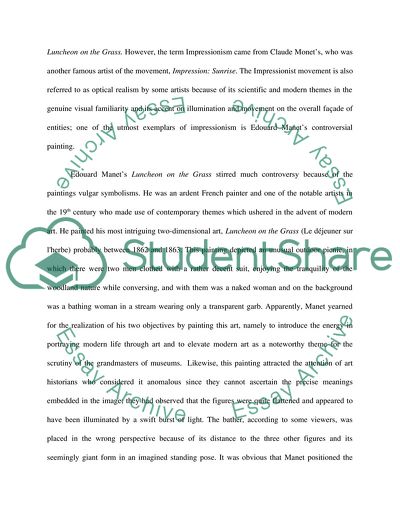Cite this document
(Art Movements in the 19th and 20th Centuries Essay Example | Topics and Well Written Essays - 1750 words, n.d.)
Art Movements in the 19th and 20th Centuries Essay Example | Topics and Well Written Essays - 1750 words. https://studentshare.org/culture/1546611-art-from-major-museum-from-the-collection-of-19th-20th-or-21st-centuries
Art Movements in the 19th and 20th Centuries Essay Example | Topics and Well Written Essays - 1750 words. https://studentshare.org/culture/1546611-art-from-major-museum-from-the-collection-of-19th-20th-or-21st-centuries
(Art Movements in the 19th and 20th Centuries Essay Example | Topics and Well Written Essays - 1750 Words)
Art Movements in the 19th and 20th Centuries Essay Example | Topics and Well Written Essays - 1750 Words. https://studentshare.org/culture/1546611-art-from-major-museum-from-the-collection-of-19th-20th-or-21st-centuries.
Art Movements in the 19th and 20th Centuries Essay Example | Topics and Well Written Essays - 1750 Words. https://studentshare.org/culture/1546611-art-from-major-museum-from-the-collection-of-19th-20th-or-21st-centuries.
“Art Movements in the 19th and 20th Centuries Essay Example | Topics and Well Written Essays - 1750 Words”. https://studentshare.org/culture/1546611-art-from-major-museum-from-the-collection-of-19th-20th-or-21st-centuries.


